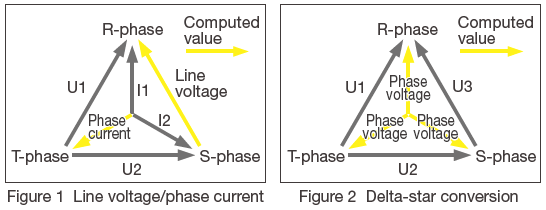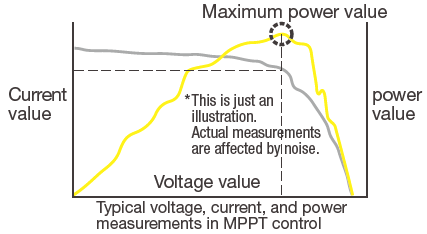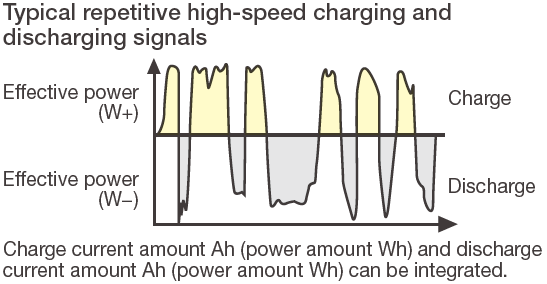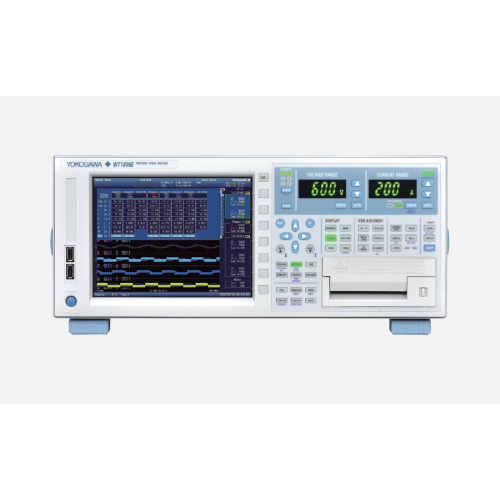Yokogawa WT1804E High Performance Power Analyzer
The WT1804E is a versatile instrument, unlocking precision power measurement capabilities for researchers, designers and engineers working on a wide variety of applications in energy efficiency and conservation and renewable energy.
Highly configurable product - Contact our technical team to discuss pricing.
The WT1804E delivers:
Accuracy – The WT1804E is the only instrument in its class that guarantees a power accuracy of 0.05% of reading plus 0.05% of range and is capable of harmonics analysis up to the 500th order of a 50/60 Hz fundamental frequency.
Reliability – Measurements need to be repeatable as well as accurate. The stability of the WT1800E ensures that precision measurements can be made today and over the long term.
Flexibility – With up to 6 input channels, a wide range of display and analysis features, and PC connectivity, the WT1800E is the measurement solution for a broad range of power efficiency and harmonic analysis requirements.
-
The WT1800E is a versatile instrument, unlocking precision power measurement capabilities for researchers, designers and engineers working on a wide variety of applications in energy efficiency and conservation and renewable energy. Whether it is for the manufacture of energy efficient devices and appliances, hybrid/electric vehicles or renewable energy technologies, the WT1800E is a universal meter for power electronic measurements and energy analysis. Key applications include:
- Electric, Hybrid Electric and Plug-in Hybrid Electric Vehicles
- Industrial equipment such as Inverters, Motors and Pumps
- Renewable energy technologies such as Solar and Wind power
- Office and Home appliances like Air conditioners and Refrigerators
- IT Data center equipment like Servers, Routers and Switches
- Battery charging and Portable devices
- Ballasts, LEDs & Fluorescent lighting
- Aircraft Power systems
Inverter and motor testing

Overview
Electric and hybrid vehicles have many electrical and mechanical components and therefore an overall performance evaluation requires the efficiency measurement of both. With 6 channels of power inputs, flexible operation and a wide bandwidth, the WT1800E is ideal for efficiency tests between the input and output of inverters. An optional motor evaluation function enables the measurement of rotation speed and changes in torque.

Delta computation
Obtain the line and phase voltages from the sums and differences of the instantaneous values of voltage and current in each element.
- Line voltages and phase currents that are not measured are computed in the three-phase three-wire system (Figure 1).
- Star-delta conversion: Line voltage is computed from the phase voltage using the three-phase four-wire system data.
- Delta-star conversion: Phase voltage is computed from the line voltage in the three-phase three-wire system (3V3A system) (Figure 2).
The WT1800E advantages
Wide bandwidth and High speed sampling
The WT1800E is capable of 16-bit high resolution and 2 MHz sampling making it possible to measure faster signals with higher precision.
Motor evaluation: Electrical angle/rotation/ direction
Measure rotation speed, torque, and output (mechanical power) of motors from analog/pulse inputs of rotation or torque sensors.
Harmonics and dual harmonics
Simultaneously measure distortion factors like THD, fundamental and harmonic components. Harmonics up to the 500th order can be measured even at 50 ms data update rate. Users can also measure harmonics on two different sources simultaneously.
Battery charge/discharge measurements
In integrated measurement, the battery charge and discharge can be evaluated. Instantaneous positive and negative values captured at a high-speed sampling rate of 2 MS/s are integrated.
Line filter to remove high frequency components
In the power evaluation of inverter waveforms, measurement values are affected by high frequency components. A digital filter function makes it possible to remove unnecessary high frequency components superimposed on signals. The filter can be independently set for each input element. An analog filter for 1 MHz/ 300 kHz, and a digital filter that can be set from 100 Hz to 100 kHz in increments of 100 Hz are available as standard.
Efficiency of renewable energy systems

Overview
Energy generated by photovoltaic cell modules and wind turbines is converted from DC to AC by a power conditioner. Minimizing losses in these conversions improves the efficiency in the overall energy system. The WT1800E provides up to 6 power inputs per unit for measuring voltage, current, power, and frequency (for AC) before and after each converter, as well as the converter and charging efficiencies.

Measuring instantaneous peak power
In photovoltaic power generation, an MPPT control varies the voltage to maximize energy harvested from the solar panel. The WT1800E can measure not only the voltage, current, and power but also the voltage, current, and power peak values for both plus (+) and minus (−) sides.
The WT1800E advantages
Multiple channels and wide input range
Evaluate Power conditioner efficiency using 6 input channels for simultaneous measurements from the inputs and outputs of boost converter, inverter, and storage battery. Direct input terminals (voltage range: 1.5 V to 1000 V and current range: 10 mA to 5 A or 1 A to 50 A) make it possible to perform high-precision measurements without using a current sensor.
Harmonic distortion factor measurement
Voltage fluctuations and harmonics flow into the power system due to reverse power flow. A harmonic measurement function enables measurement of harmonic components to compute and display total harmonic distortion (THD).
Ripple factor and power loss measurements
A user-defined function makes it possible to compute power loss, DC voltage and DC current ripple factors between the input and output. Up to 20 arithmetic expressions can be set. Display names for the arithmetic operations F1, F2, and so on can be freely changed.
Typical arithmetic expressions
- DC voltage ripple factor = [(Voltage peak value (+) – Voltage peak value (−))/2 × DC voltage value (mean)] × 100
- Power loss = Output power – Input power
Energy bought/sold and charged/discharged
Measure the amount of power sold/bought in grid interconnection and of battery charge/discharge. Measure the amount of power sold/ bought in grid interconnections and in battery charge/discharges. The WT1800E enables the integration of current (q), apparent power (WS), reactive power (WQ), as well as the effective power integration in sold/bought power and charge/discharge modes. Furthermore, a user-defined function makes it possible to calculate the Average active power within the integration period.
Efficiency of inverter-motor in electric vehicles

Overview
The WT1800E supports power measurements on up to 6 input channels making it ideal for evaluating the efficiency between the input and output of an electric vehicle. An optional motor evaluation function makes it possible to simultaneously monitor voltage, current, and power changes, as well as changes in rotation speed, torque and mechanical power.

Battery charge/discharge measurements
In integrated measurement, the battery charge and discharge can be evaluated. Instantaneous positive and negative values captured at 2 MS/s high-speed sampling rate are integrated, and each of the total values is displayed.
The WT1800E advantage
Wide bandwidth and High speed sampling
The WT1800E is capable of 16-bit high resolution and 2 MHz sampling making it possible to measure faster signals with greater precision.
Harmonics and dual harmonics
Motor testing is performed at various rotation speeds. The WT1800E supports a lower limit frequency of 0.1 Hz to enable measurement of harmonics at a very low motor rotation speed without using an external sampling clock.
Motor evaluation: Electrical angle/rotation/direction
Measure rotation speed, torque, and output (mechanical) power of motors from analog/pulse outputs of rotation or torque sensors.
Individual null function: offset correction for each input
A common problem when testing inverter motors is the presence of ambient noise that can mean test values are non-zero even before testing begins. The WT1800E’s null function allows users to enable, disable or reset the offset values for voltage, current and motor input signals of each element separately.
DA output and remote control
Users may want to check changes in data, along with other measurement data (temperature, etc.) at the same time that communication data, such as voltage, current, power, and efficiency are required. A DA output function allows users to generate analog signals on up to 20 channels.

